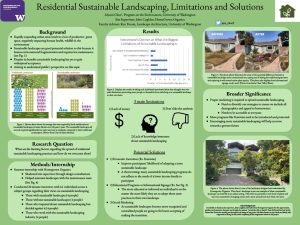The Limitations of Residential Sustainable Landscaping and How to Overcome Them
We are all well aware of climate change and hear about its worsening impacts nearly daily. With urbanization and major corporations only making the problem worse, there seems to be little hope. But one step in the right direction could be sustainable landscaping in replacement of harmful, conventional grass lawns to reduce our negative environmental impact as a society. The purpose of this study was to figure out what was preventing or limiting homeowners from changing their own yards into a more sustainable alternative. To accomplish this task, I interviewed 4 subgroups of people while interning with HomeGrown Organics (1. Workers within sustainable landscaping 2. Homeowners with sustainable landscapes 3. Homeowners who inquired about sustainable landscaping but decided against it 4. Homeowners with a conventional landscape). The main themes throughout my interviews came down to 3 ideas: too expensive, lack of awareness/knowledge on the topic and did not like the aesthetic of sustainable landscaping, felt too wild. All 3 of these limitations can be overcome with economic incentives, educational programs, and social marketing, respectively. These changes could help encourage sustainable landscaping and make it more normalized in our society. Which in turn can lead towards a greener, more sustainable future.
